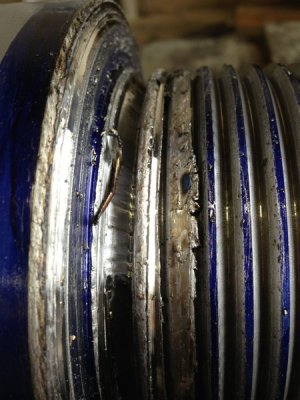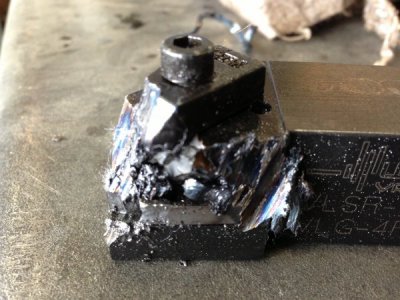I read the SB book. I watched videos. I read forums. But there seem to be exceptions and variables depending on the thread and the machine and who's doing it. But nobody explained that in order to get the correct angle I can't go by the markings on the machine.
To me the one tip I got early on was you're just going to have to do it. In this case I had so much other stuff like a proper grinder and gage to hold the tool at the correct angle, didn't understand what I was looking at on the gear chart to set up the feed, the cluster that is the gear train on the 9x20, my machine just doesn't go slow enough so I had to make a hand crank, the real way to use the fishtail and on and on. There was a ton of side trips and detours so by the time I was actually ready to cut the threads it was kind of anticlimactic. But finally getting how to not go by the deg on the compound, but using my Starrett gage I was able to get the correct angle. There is still a lot I need to learn but after three tries I got it done. I have another project, a graduated carriage stop, that needs to be threaded. Hopefully I'll be able to get to that before all this fades. I feel like it will stick though because each try taught me a lesson and those stick with me more.



